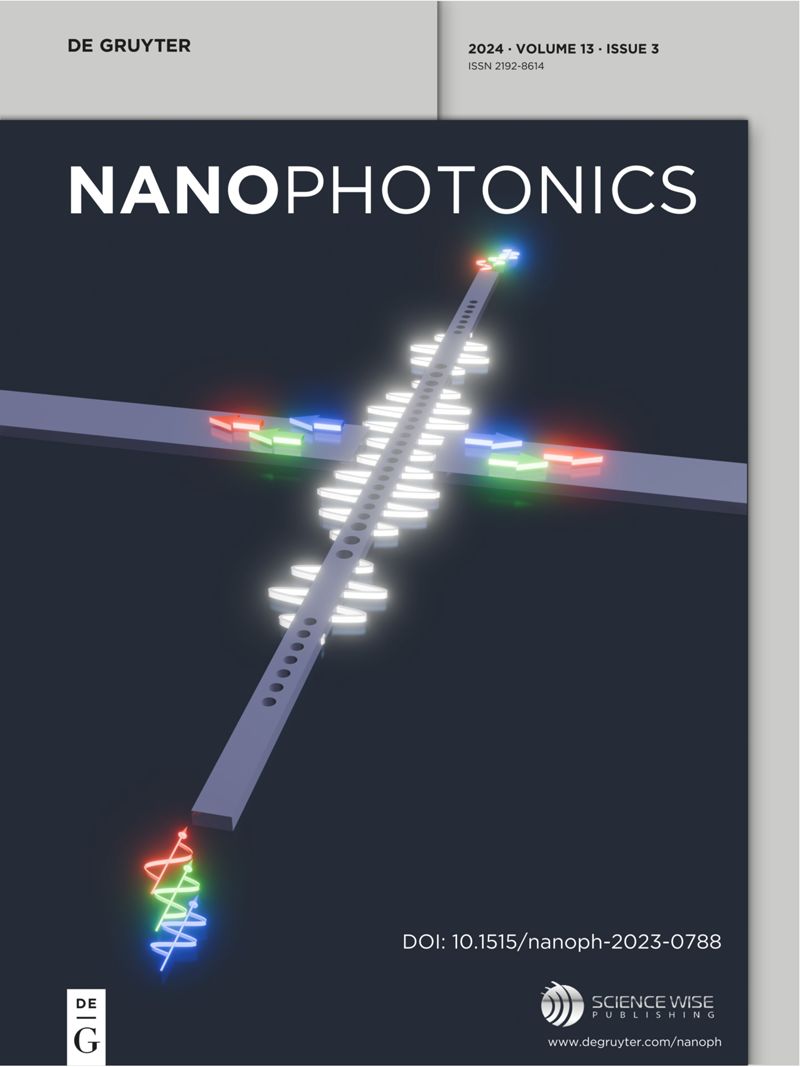Silicon–germanium receivers for short-wave-infrared optoelectronics and communications
IF 6.5
2区 物理与天体物理
Q1 MATERIALS SCIENCE, MULTIDISCIPLINARY
引用次数: 19
Abstract
Abstract Integrated silicon nanophotonics has rapidly established itself as intriguing research field, whose outlets impact numerous facets of daily life. Indeed, nanophotonics has propelled many advances in optoelectronics, information and communication technologies, sensing and energy, to name a few. Silicon nanophotonics aims to deliver compact and high-performance components based on semiconductor chips leveraging mature fabrication routines already developed within the modern microelectronics. However, the silicon indirect bandgap, the centrosymmetric nature of its lattice and its wide transparency window across optical telecommunication wavebands hamper the realization of essential functionalities, including efficient light generation/amplification, fast electro-optical modulation, and reliable photodetection. Germanium, a well-established complement material in silicon chip industry, has a quasi-direct energy band structure in this wavelength domain. Germanium and its alloys are thus the most suitable candidates for active functions, i.e. bringing them to close to the silicon family of nanophotonic devices. Along with recent advances in silicon–germanium-based lasers and modulators, short-wave-infrared receivers are also key photonic chip elements to tackle cost, speed and energy consumption challenges of exponentially growing data traffics within next-generation systems and networks. Herein, we provide a detailed overview on the latest development in nanophotonic receivers based on silicon and germanium, including material processing, integration and diversity of device designs and arrangements. Our Review also emphasizes surging applications in optoelectronics and communications and concludes with challenges and perspectives potentially encountered in the foreseeable future.用于短波红外光电子学和通信的硅锗接收器
集成硅纳米光子学已迅速成为一个引人注目的研究领域,其应用领域影响着人们日常生活的方方面面。事实上,纳米光子学推动了光电子、信息和通信技术、传感和能源等领域的许多进步。硅纳米光子学旨在提供基于半导体芯片的紧凑和高性能组件,利用现代微电子技术中已经开发的成熟制造程序。然而,硅的间接带隙,其晶格的中心对称性质及其跨光通信波段的宽透明窗口阻碍了基本功能的实现,包括高效的光产生/放大,快速的电光调制和可靠的光探测。锗在该波长域具有准直接能带结构,是硅芯片工业中公认的补充材料。因此,锗及其合金是活性功能最合适的候选者,即使它们接近硅家族的纳米光子器件。随着基于硅锗的激光器和调制器的最新进展,短波红外接收器也是解决下一代系统和网络中指数级增长的数据流量的成本、速度和能耗挑战的关键光子芯片元件。在此,我们详细概述了基于硅和锗的纳米光子接收器的最新发展,包括材料加工,集成和器件设计和布置的多样性。我们的评论还强调了光电子和通信领域的应用激增,并总结了在可预见的未来可能遇到的挑战和前景。
本文章由计算机程序翻译,如有差异,请以英文原文为准。
求助全文
约1分钟内获得全文
求助全文
来源期刊

Nanophotonics
NANOSCIENCE & NANOTECHNOLOGY-MATERIALS SCIENCE, MULTIDISCIPLINARY
CiteScore
13.50
自引率
6.70%
发文量
358
审稿时长
7 weeks
期刊介绍:
Nanophotonics, published in collaboration with Sciencewise, is a prestigious journal that showcases recent international research results, notable advancements in the field, and innovative applications. It is regarded as one of the leading publications in the realm of nanophotonics and encompasses a range of article types including research articles, selectively invited reviews, letters, and perspectives.
The journal specifically delves into the study of photon interaction with nano-structures, such as carbon nano-tubes, nano metal particles, nano crystals, semiconductor nano dots, photonic crystals, tissue, and DNA. It offers comprehensive coverage of the most up-to-date discoveries, making it an essential resource for physicists, engineers, and material scientists.
 求助内容:
求助内容: 应助结果提醒方式:
应助结果提醒方式:


